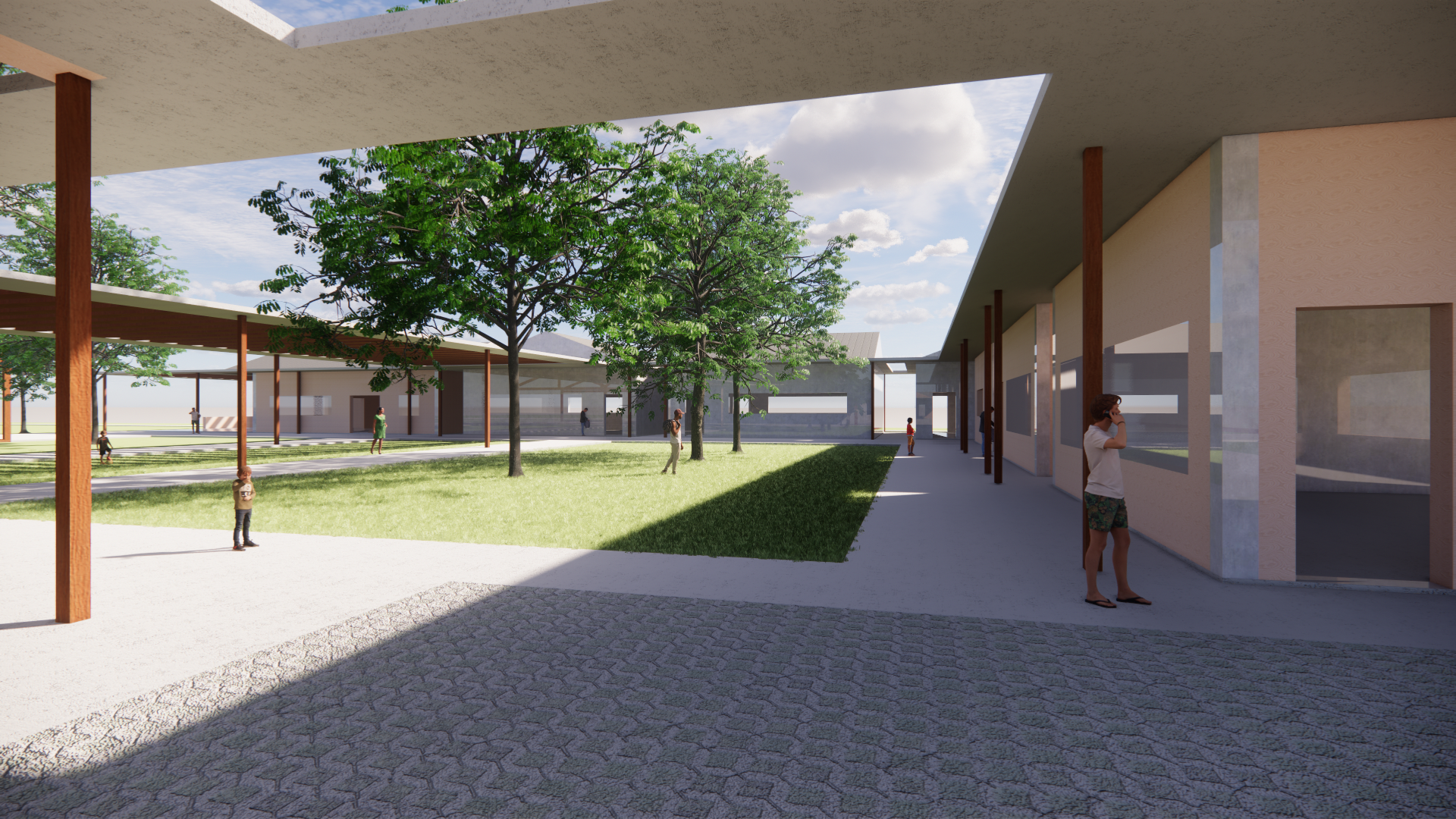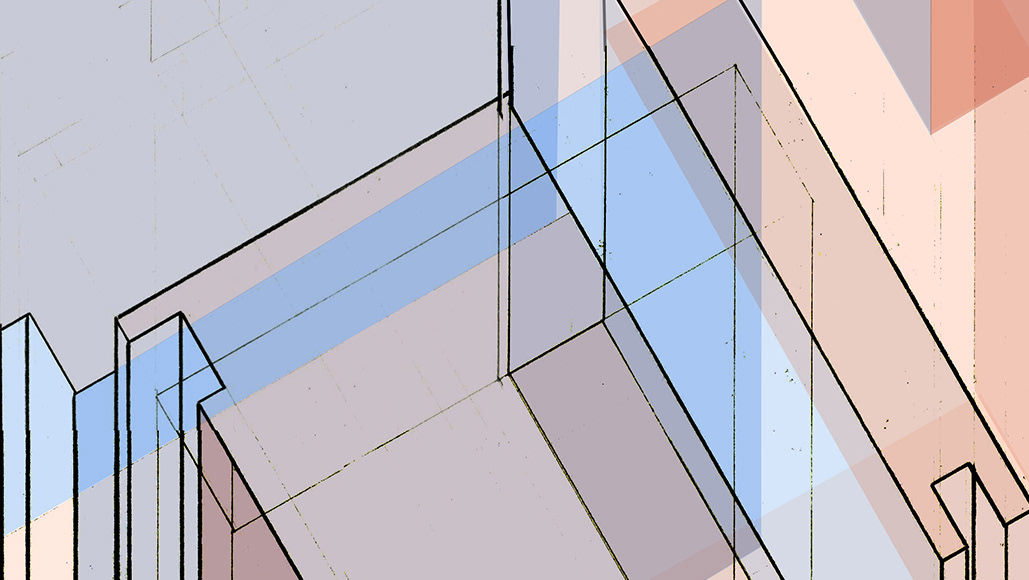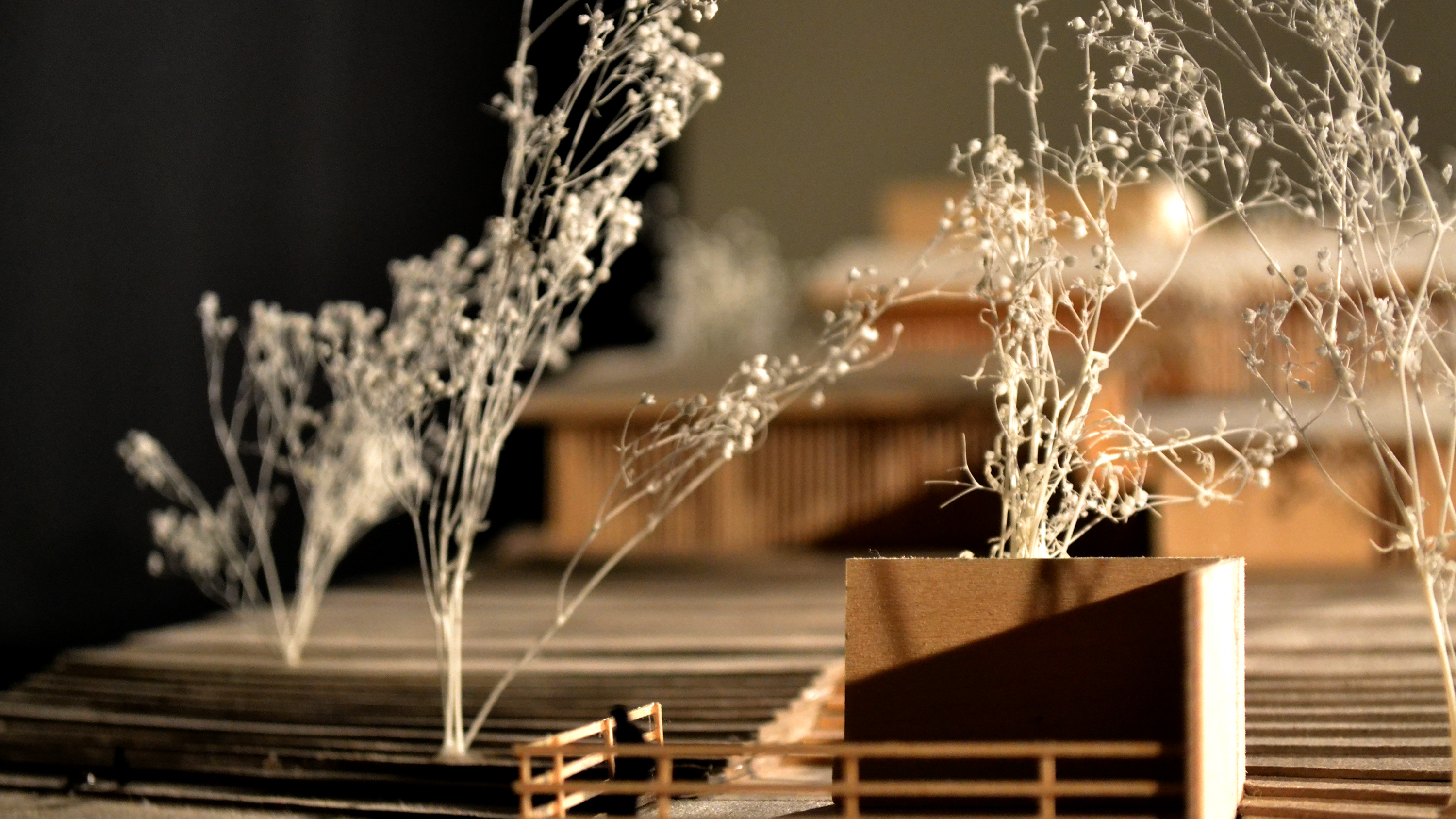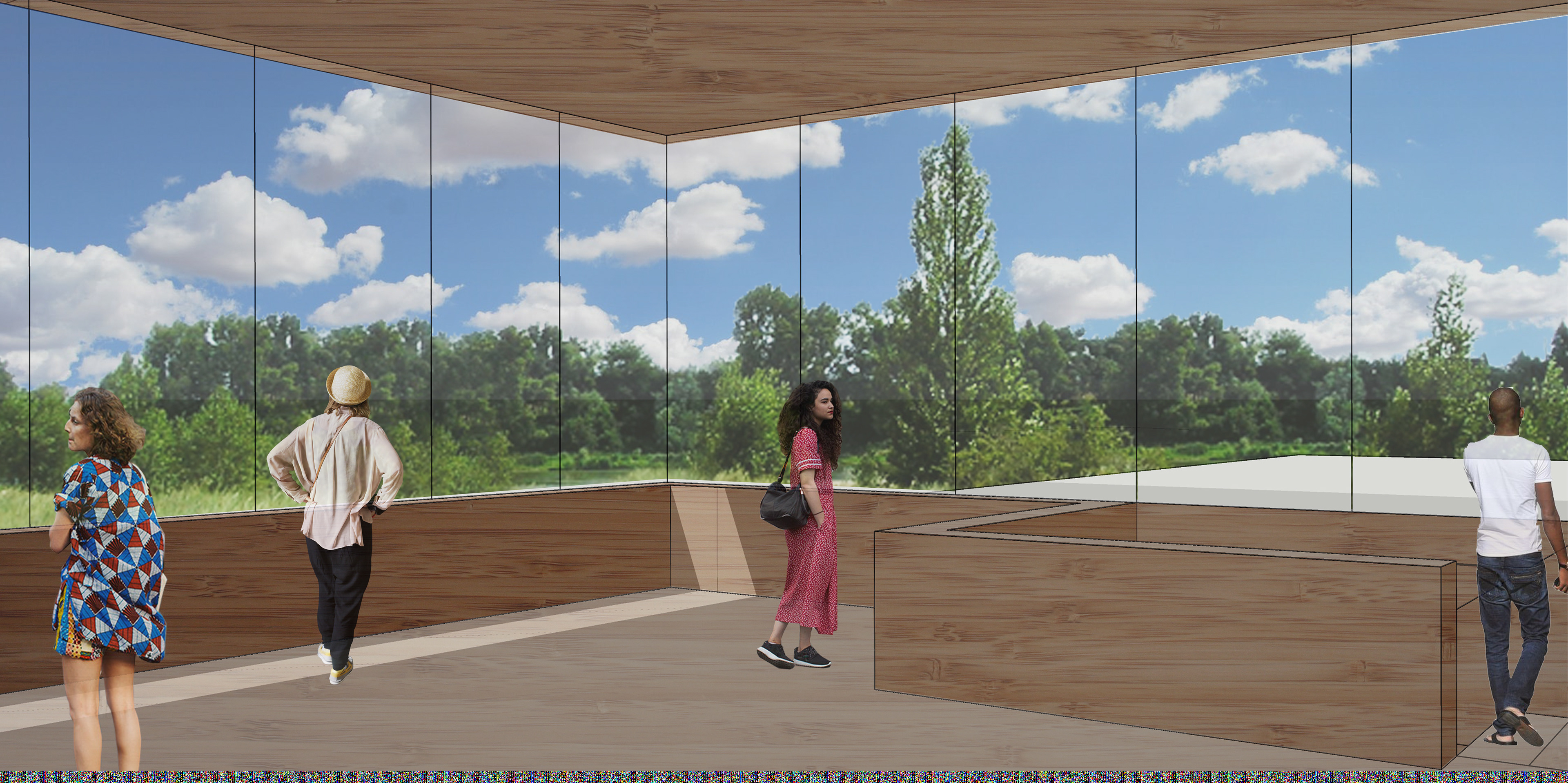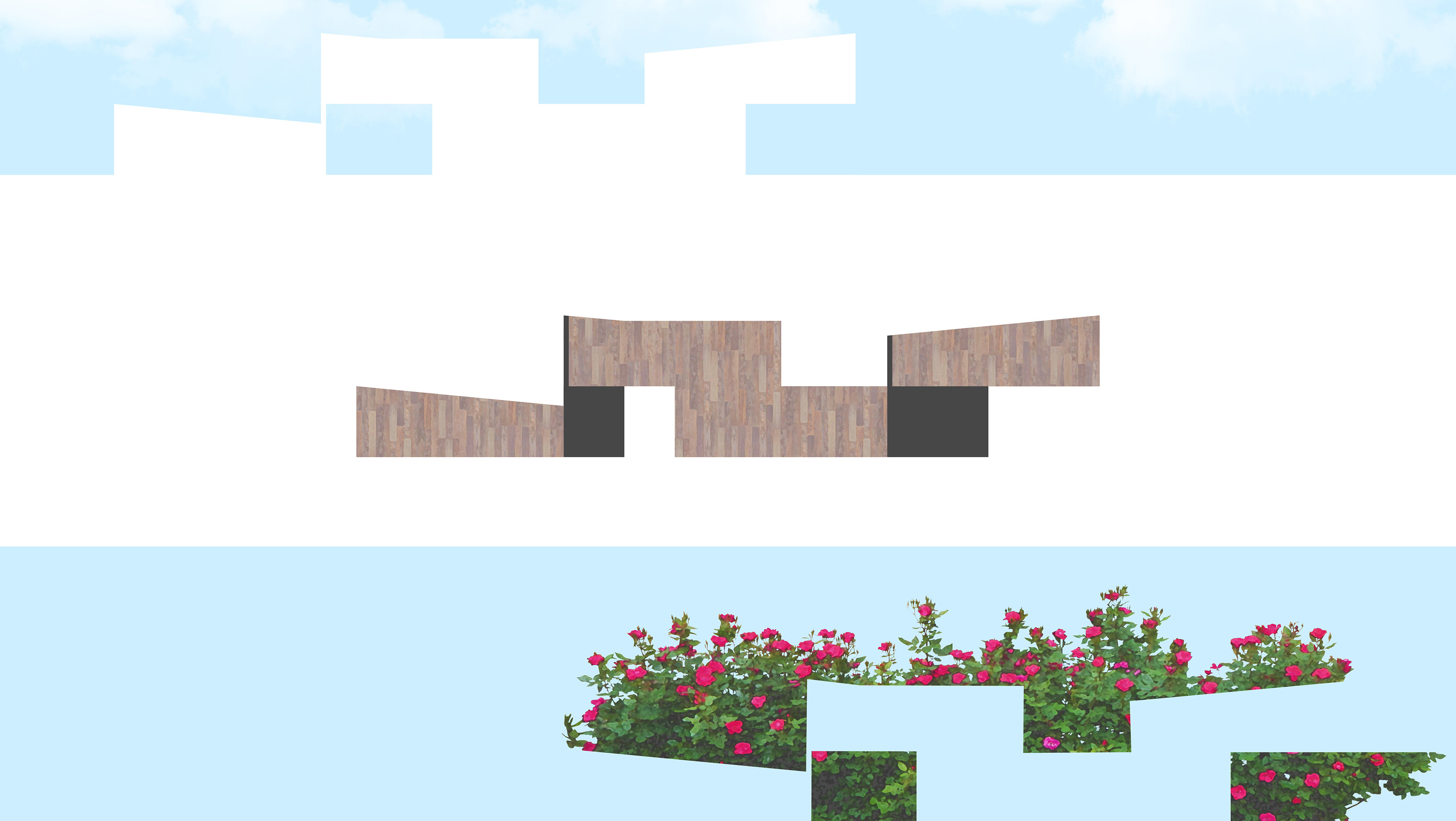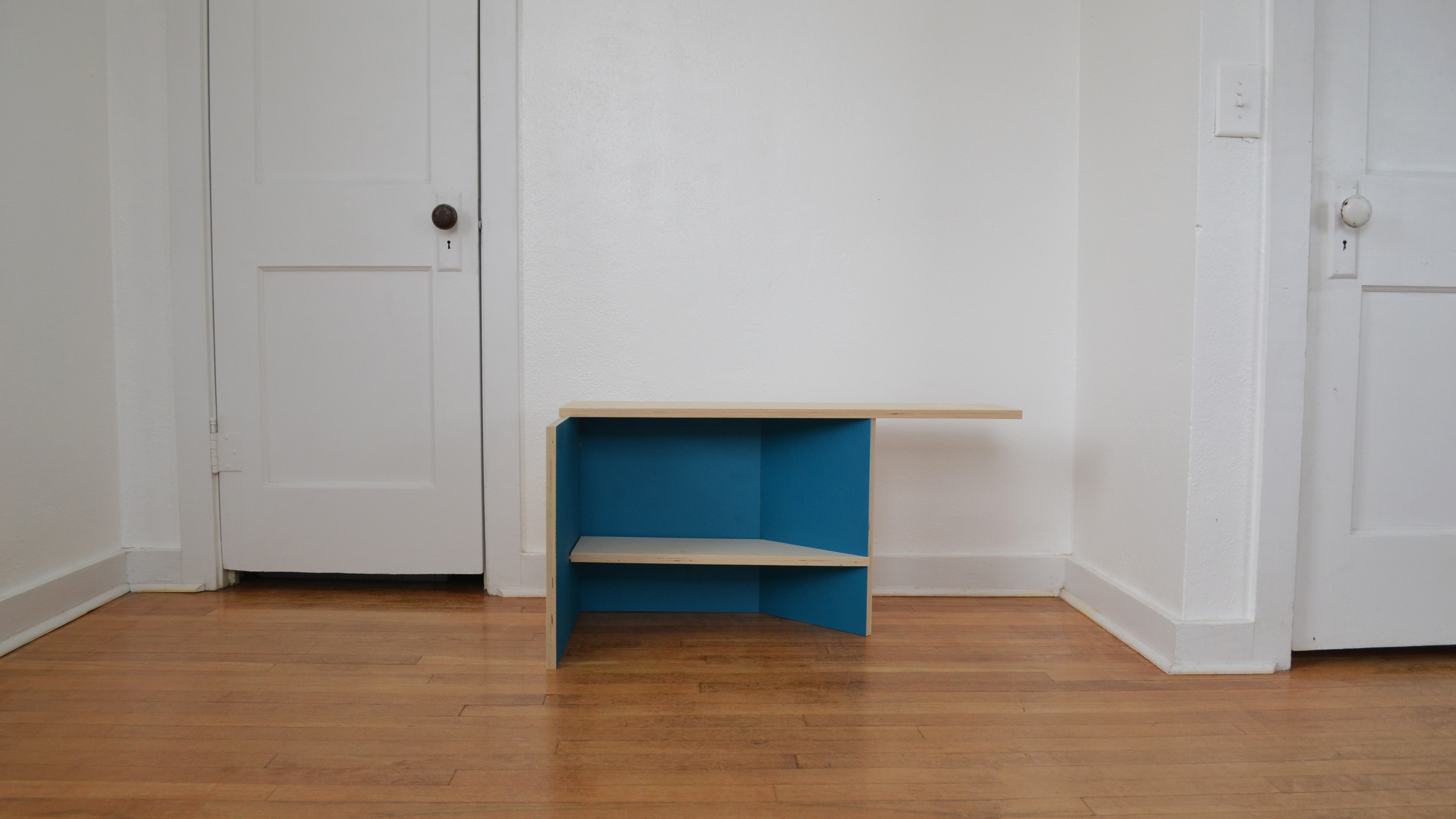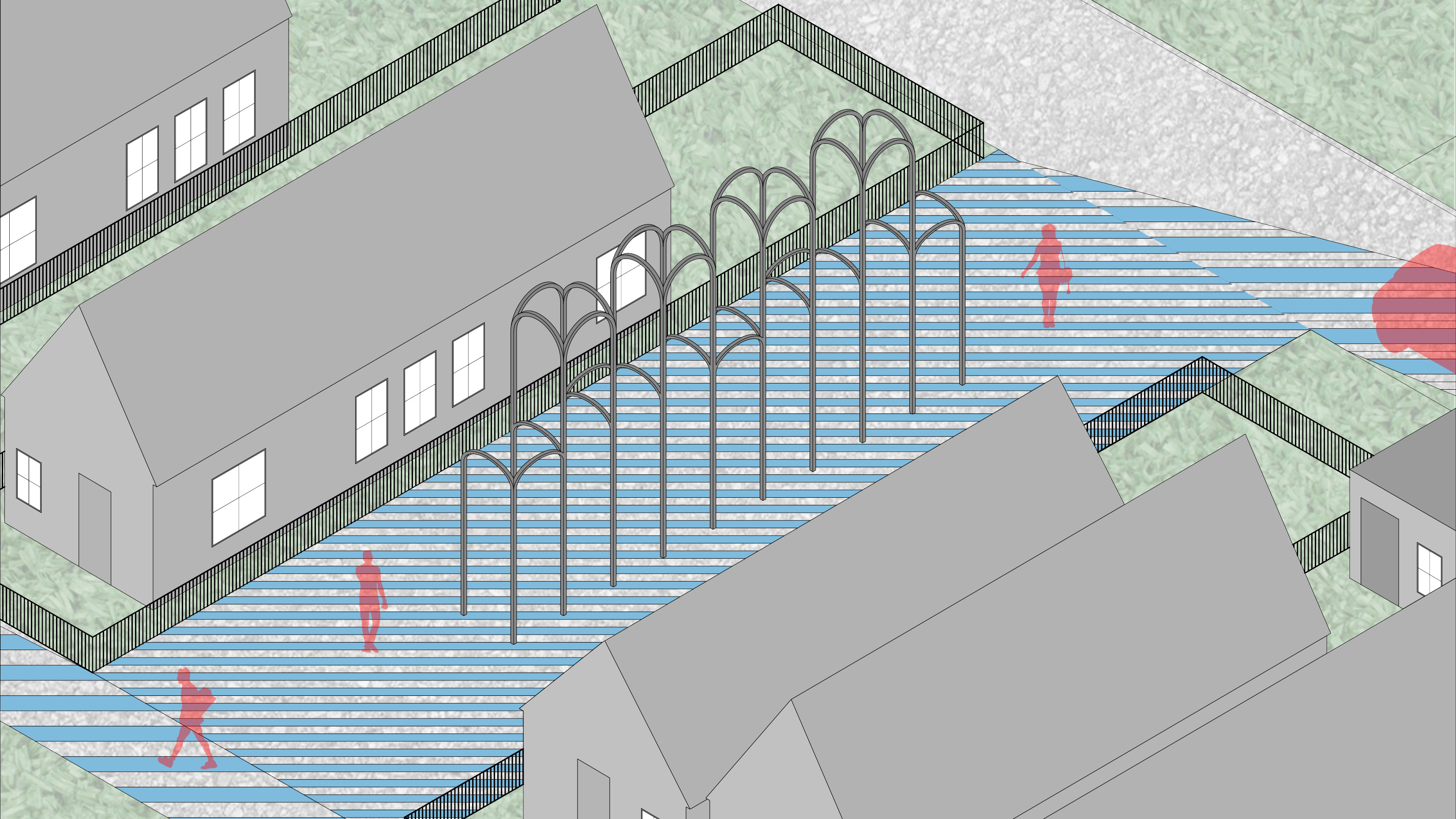Coleman Coker stands to the left of the column grid as we prepared to pour concrete footings for our bridge's columns and into the molds formed for the pavers leading to the outdoor living room.
One of this final images taken by me during our only weekend of construction in 2020: the pavers from the bridge to the outdoor living room have been poured and the bridge has been fully framed but missing decking (which is complete but remains in Austin in our workshop).
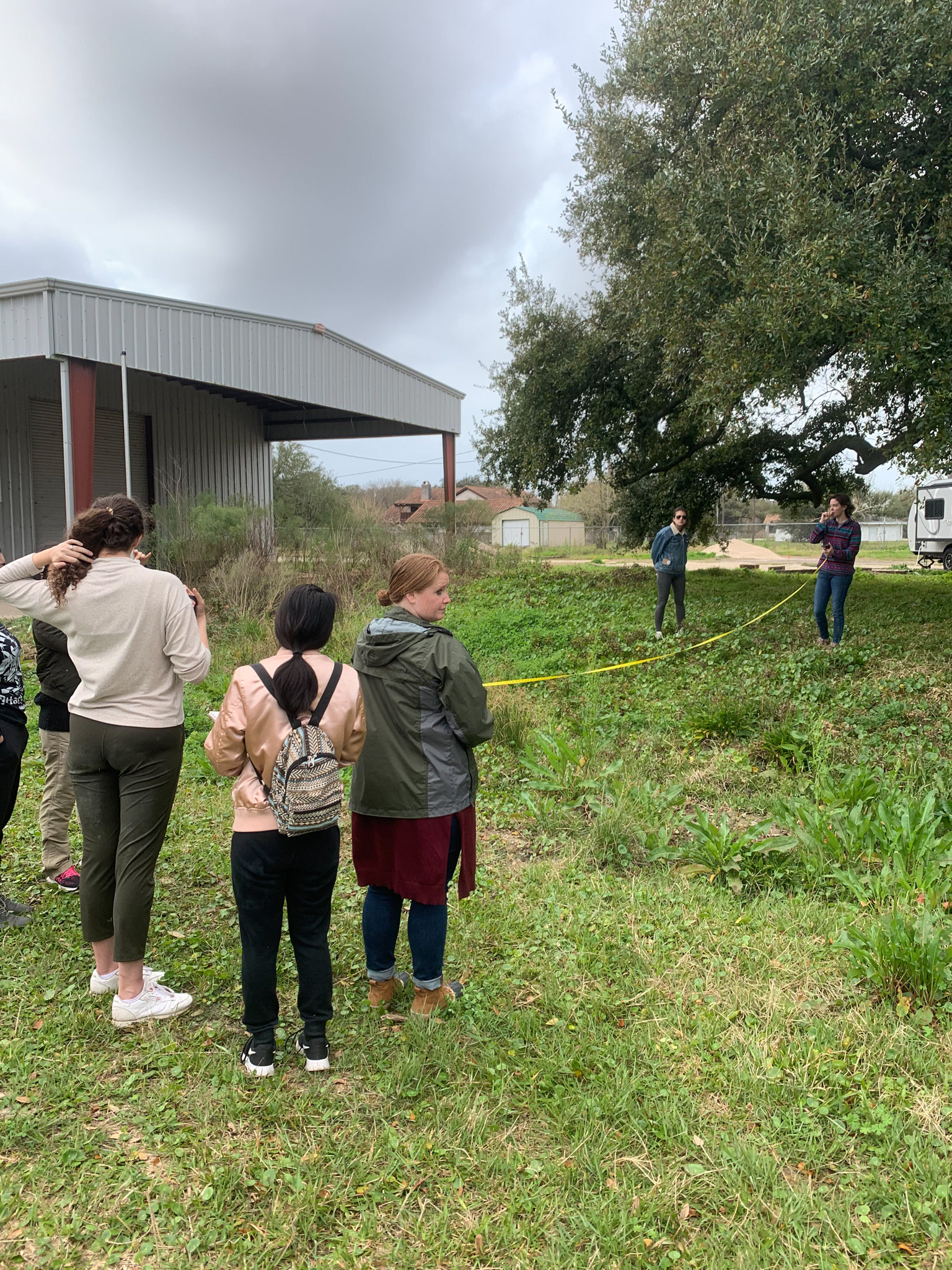
Measuring elevations on site.
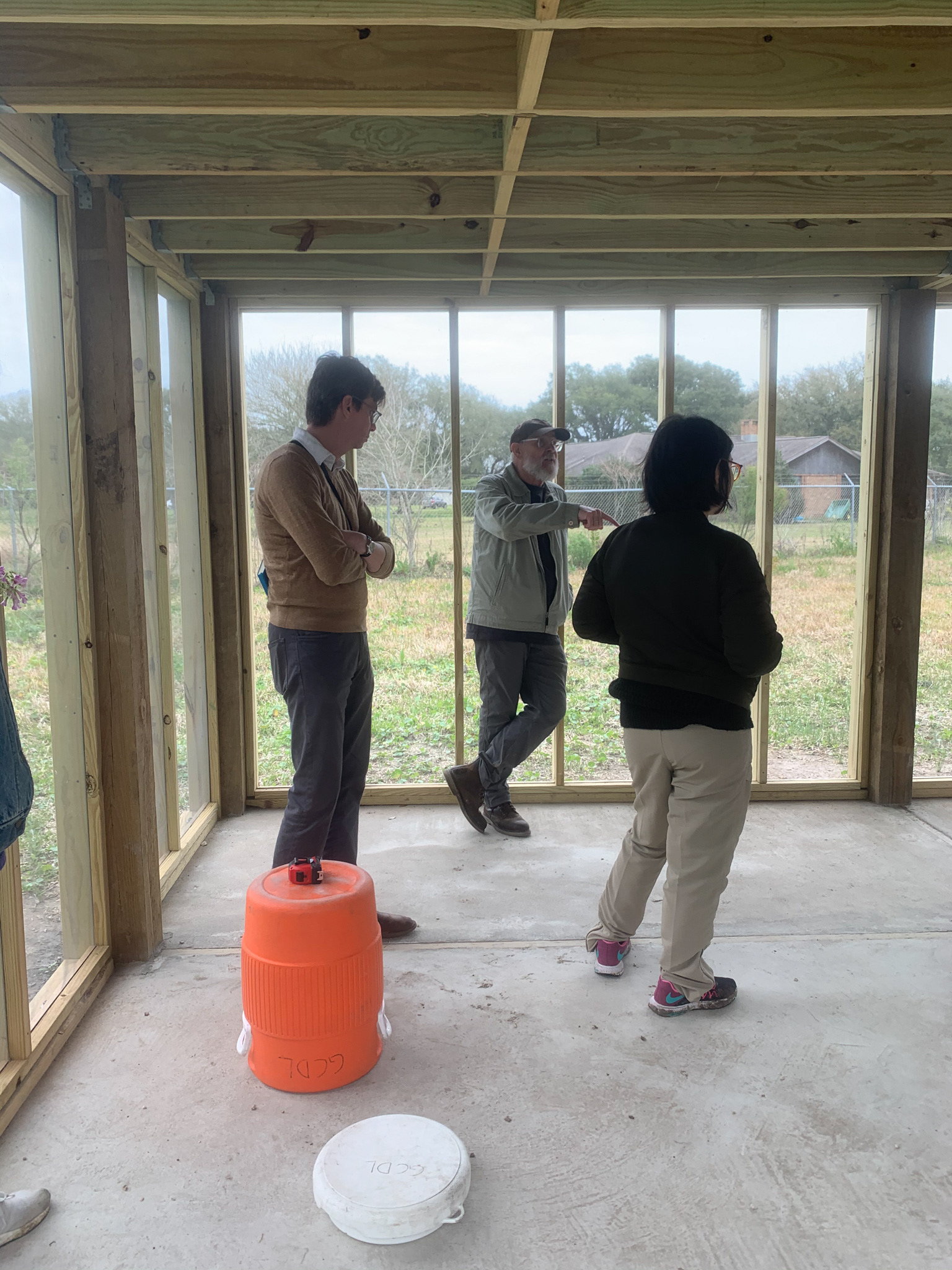
Discussing what furniture we could build that would best fit in the space.
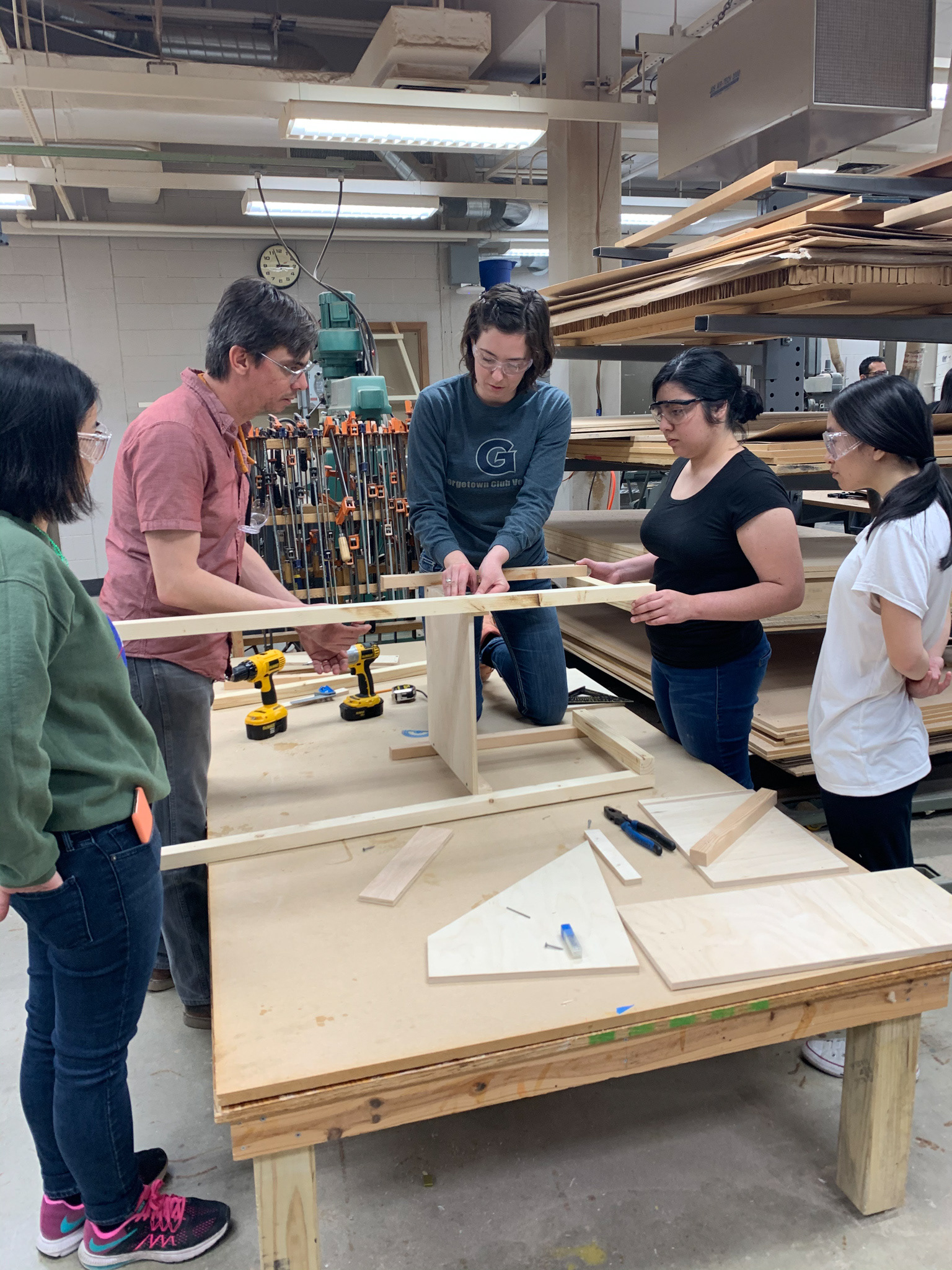
Building a prototype of our main chair - to be constructed with cedar and steel.
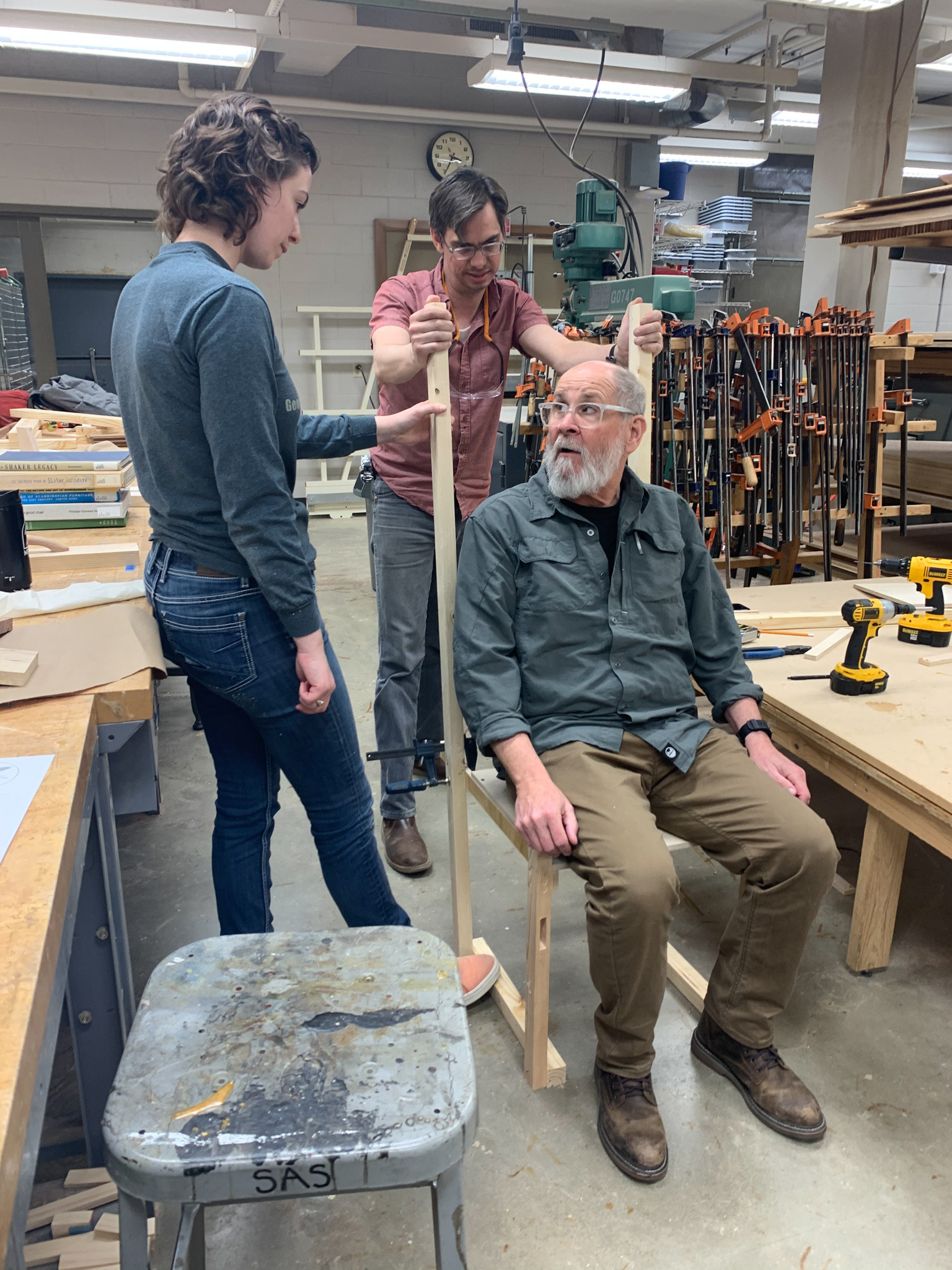
Professor Coker trying out our prototype.
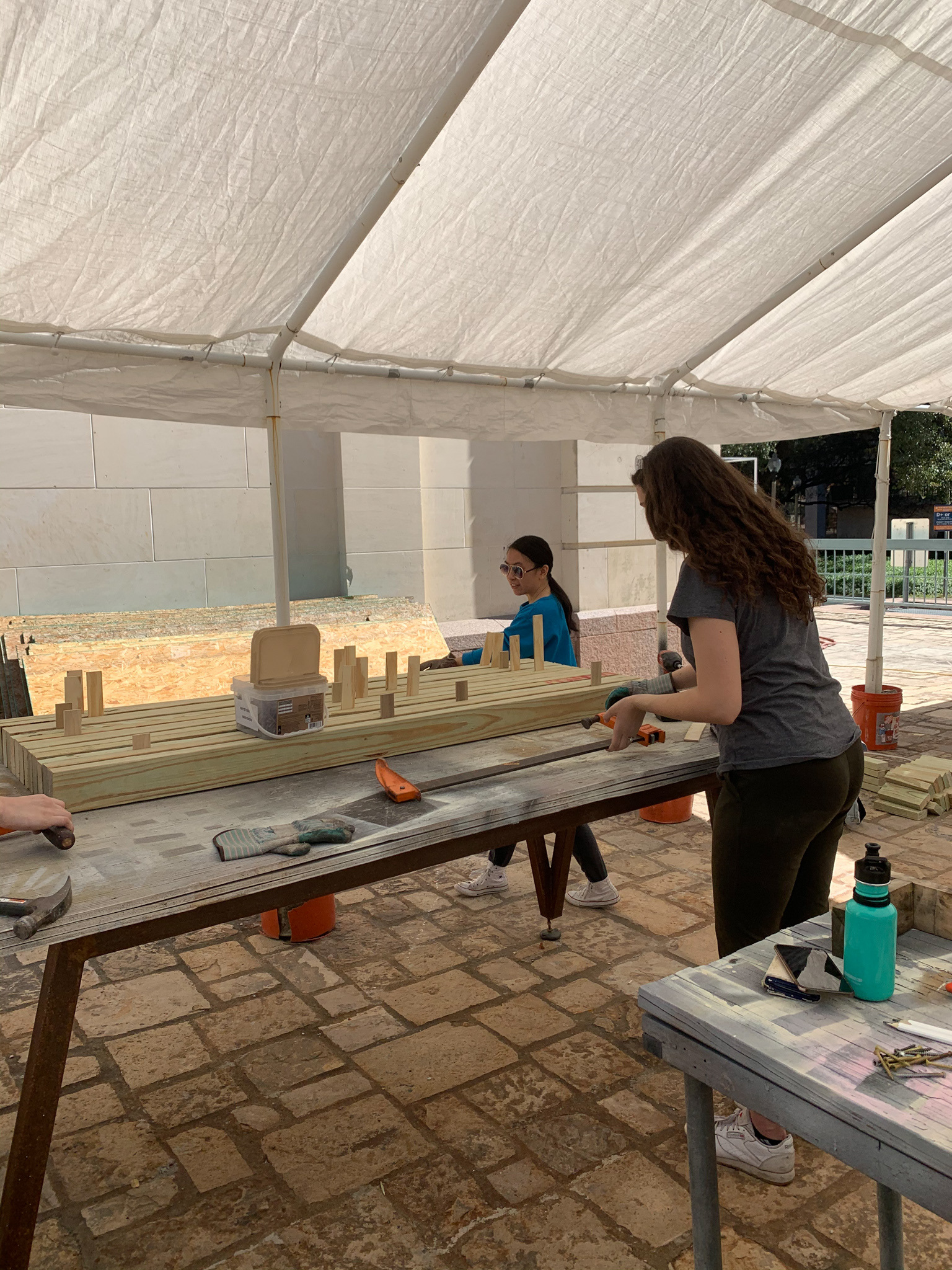
Studio building the bridge decking.
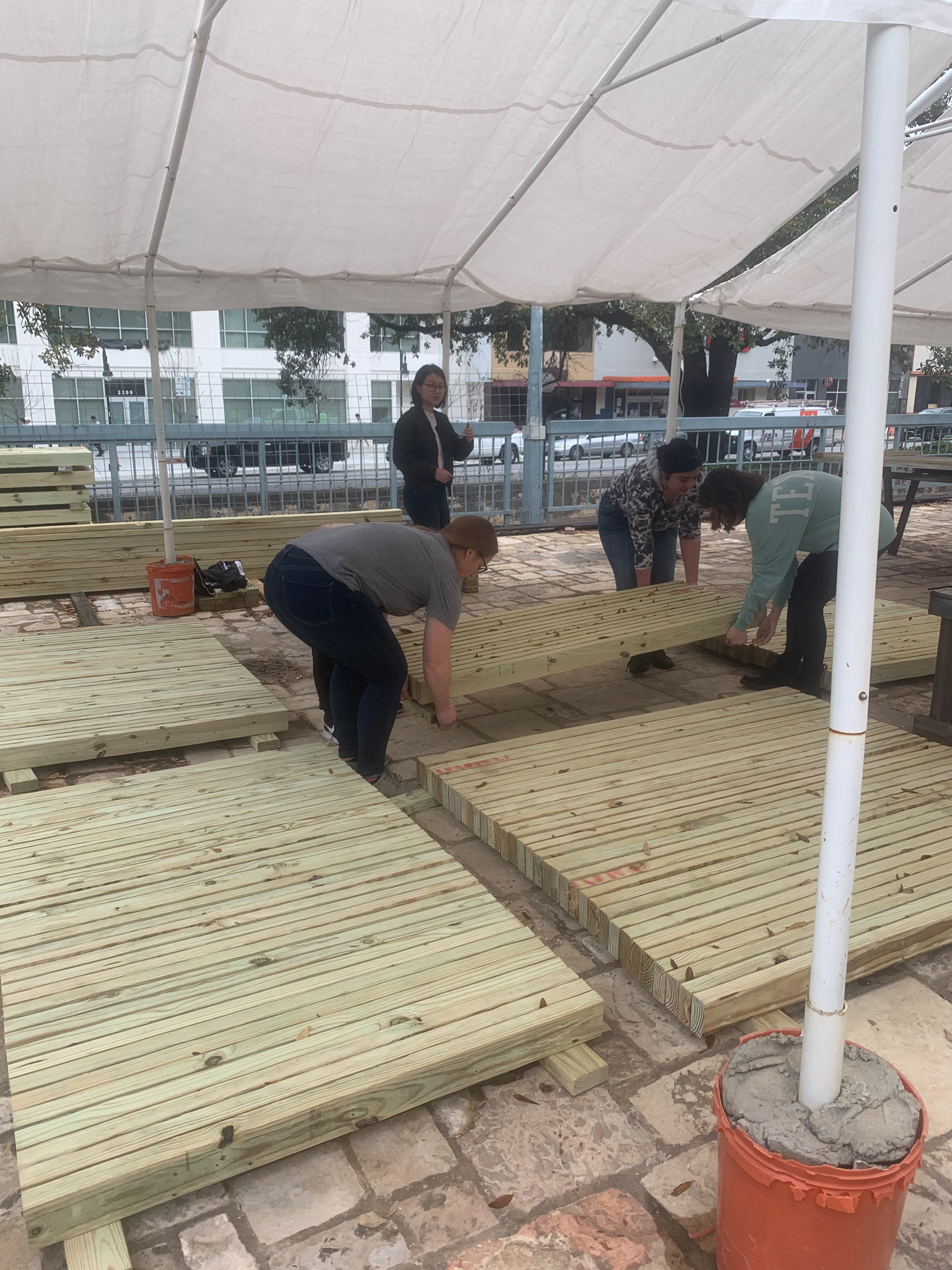
Measuring and labeling different deck pieces.
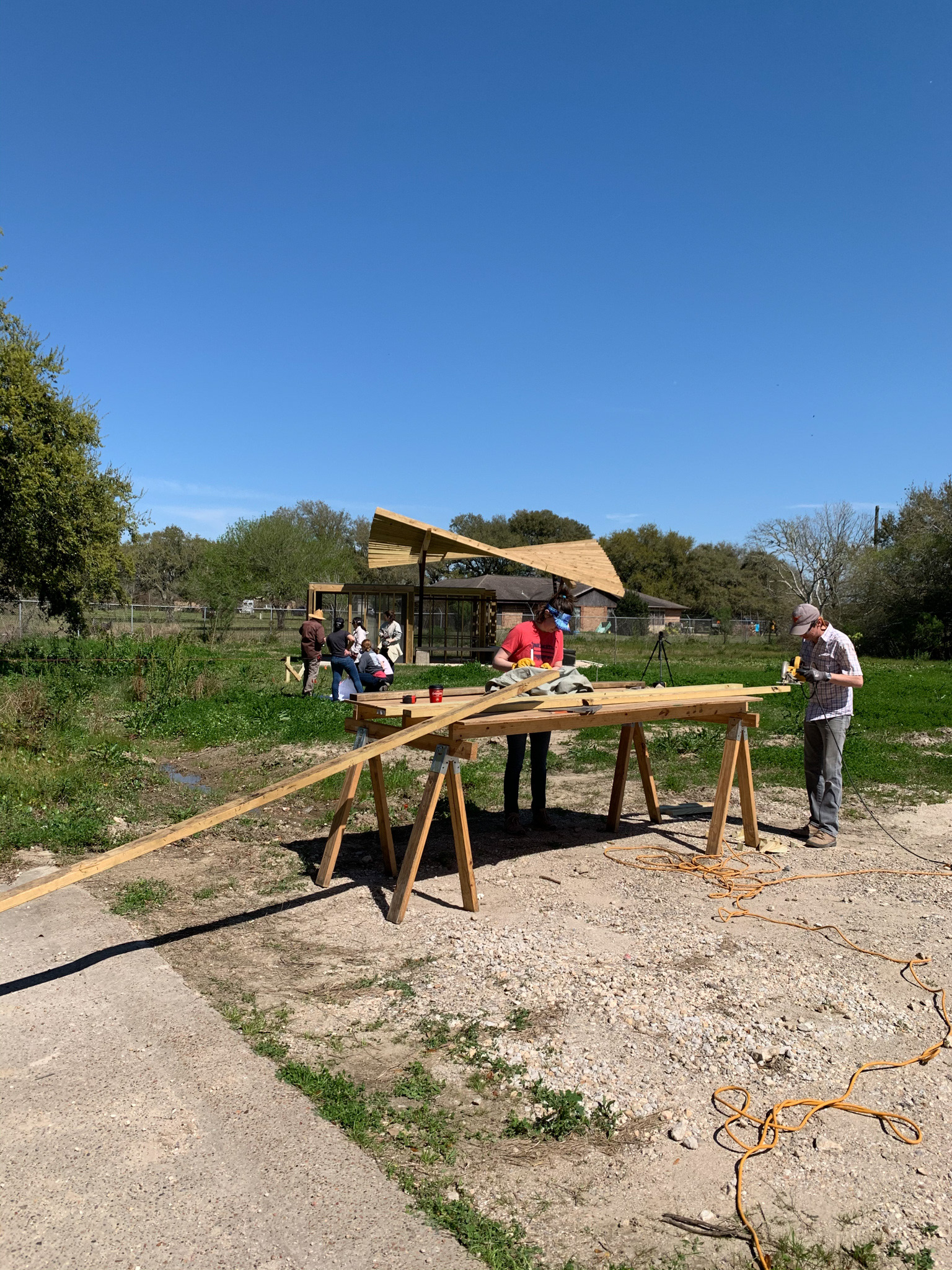
Constructing bridge framing on site.
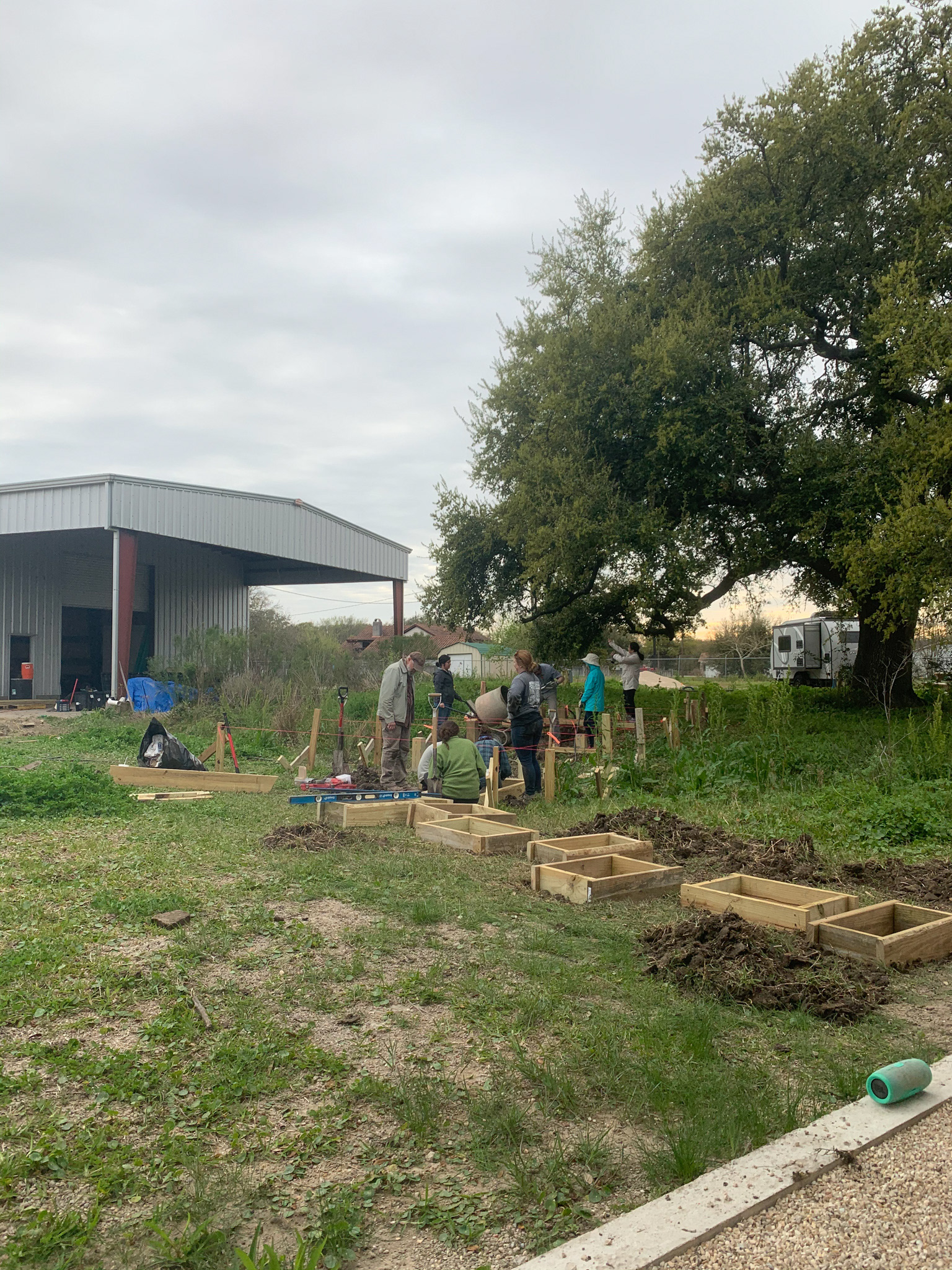
Overall progress during build as concrete is poured for column footings.
The footbridge and pavers we designed and built connect the RV campsites to a screened-in porch outdoor living room.
From the outdoor living room, one can better observe the grade change and how our floating panels work.
View of bridge and pavers with old live oak and RV campers.
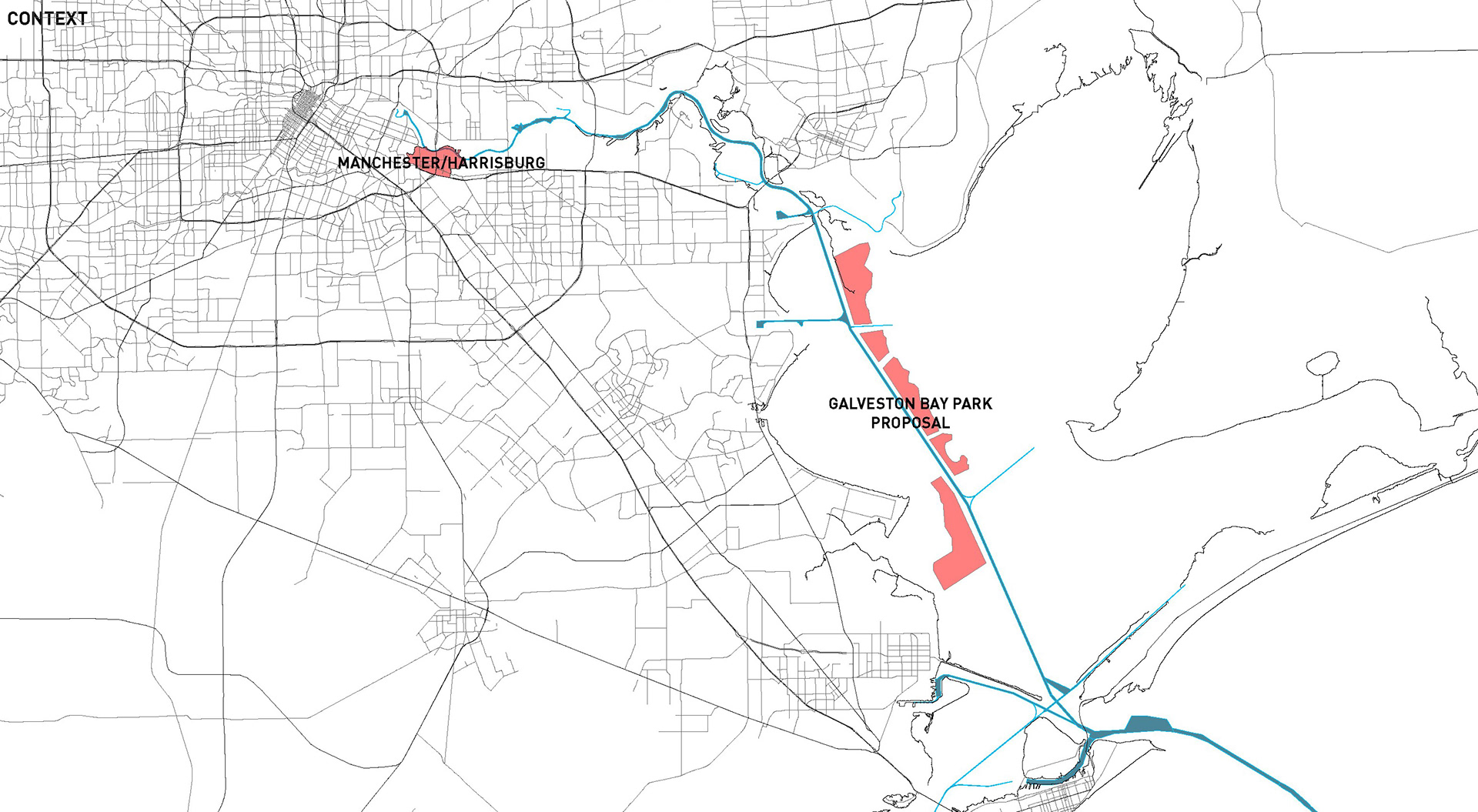
Context map.
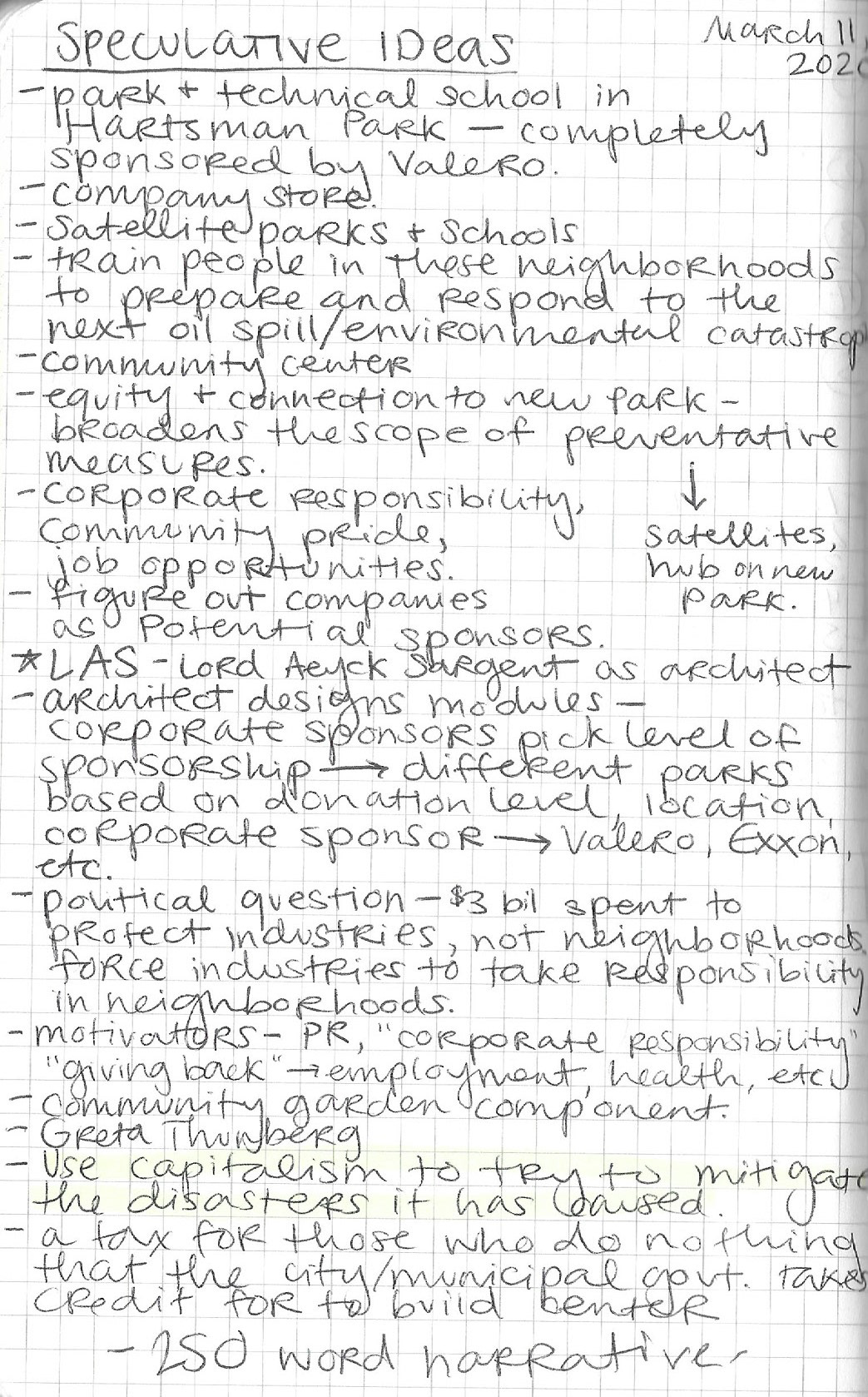
A page from my sketchbook shows a development of my ideas before condensing into a project intention and summary
Reinventing Hartman Park
Park and technical school, entirely sponsored by biggest offenders in toxic chemical pollution (Valero, Goodyear, Ameriforge, and Akema) for the specific neighborhood of Manchester/Harrisburg. The institution will train local citizens and hire them to prepare and be proactive for the next environmental disaster that they cause. This space will also include a community center and market, bringing healthy food and yet more jobs to the residents. There will be a satellite park on the proposed Galveston Bay Park sponsored by the main companies that will benefit from the park (Marathon Petroleum, Valero, Exxon Mobil, and Chevron).
- Provide a purposeful community center and daycare for residents.
- Provide a consistent source of healthy and affordable food.
- Provide jobs and training for residents to learn the mitigation process as well as proactive measures in the case of the next chemical spill, climate disaster, or crisis in the community
- Research and develop biological/technological resources for residents facing health problems caused by any major corporation listed.
- Research Lab Types: Research Renewable Power Options, Environmental Clean Up – Preparatory and Reactionary, Ongoing monitoring of local air, water, and soil quality.
The Green New Deal was used as an outline to focus goals and intentions for this project.
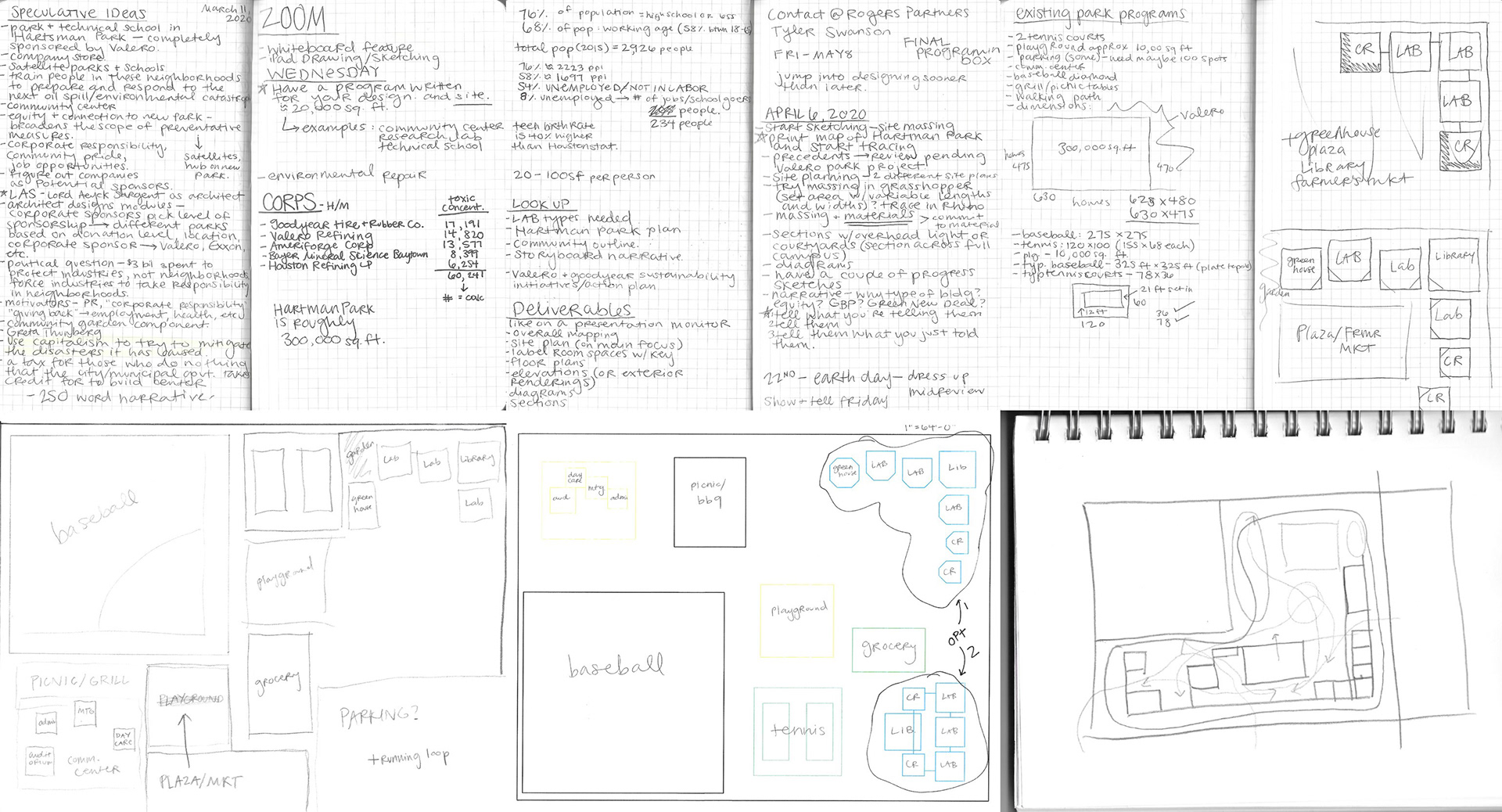
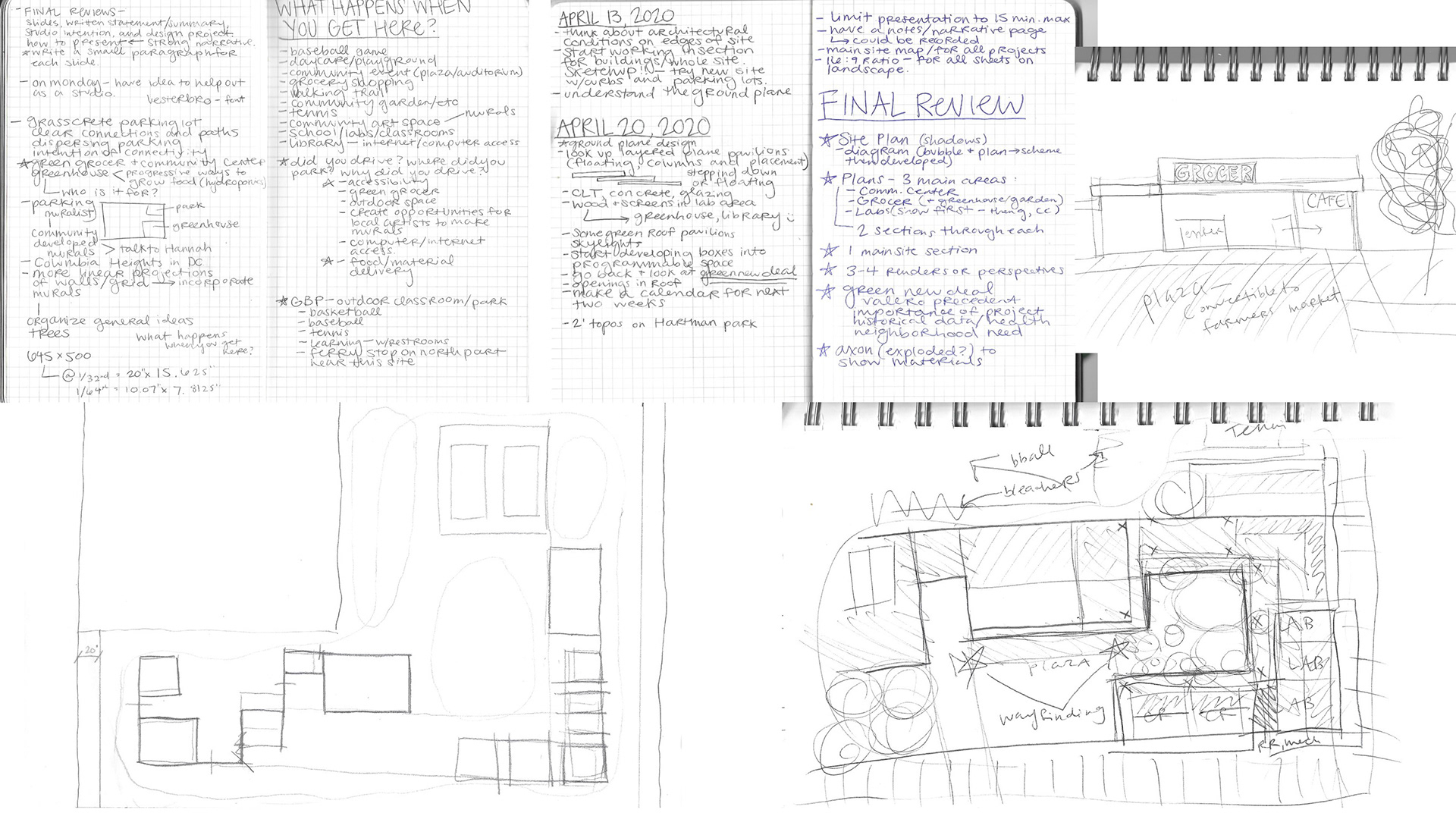
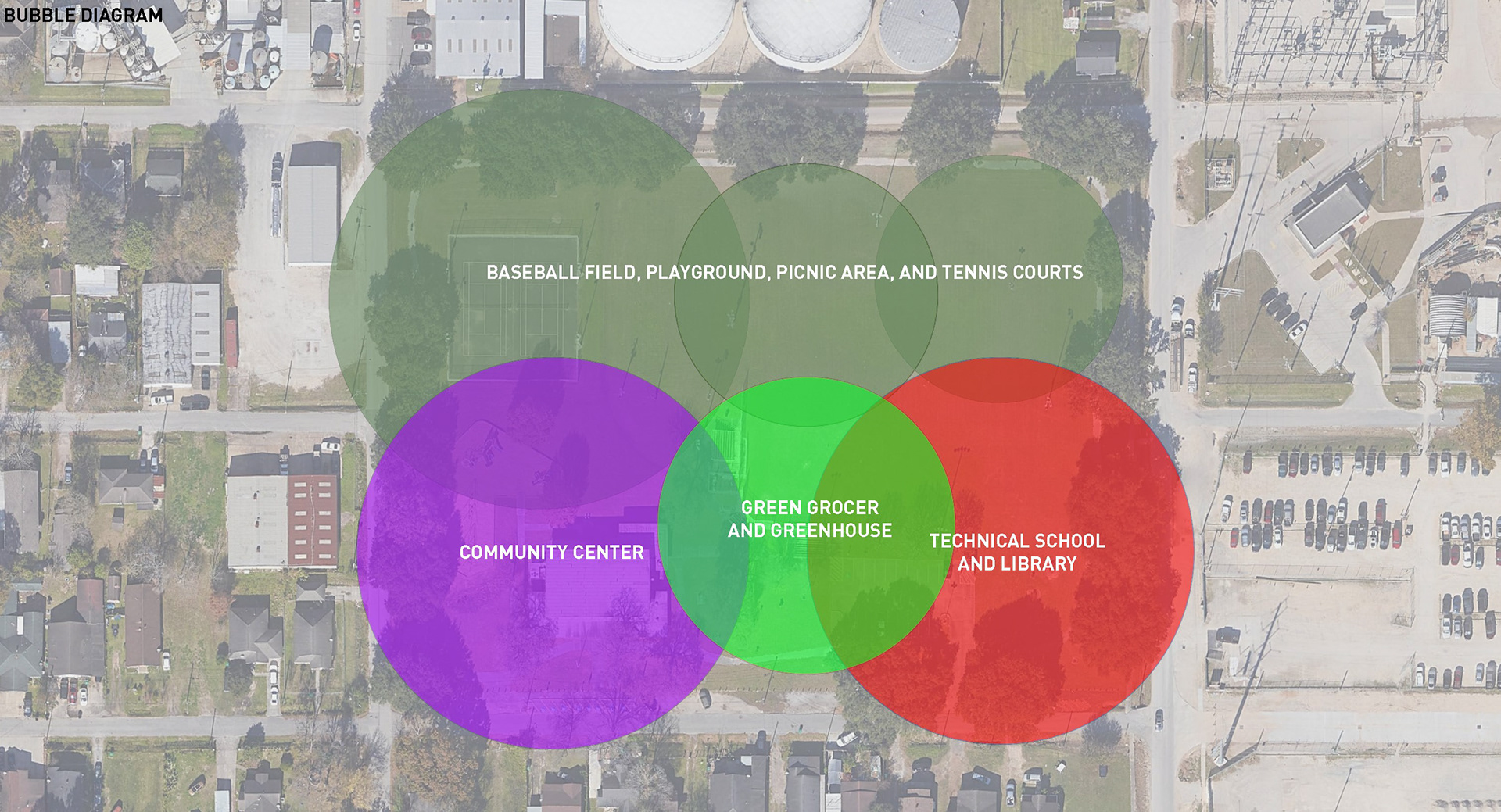
Bubble diagram of site plan.
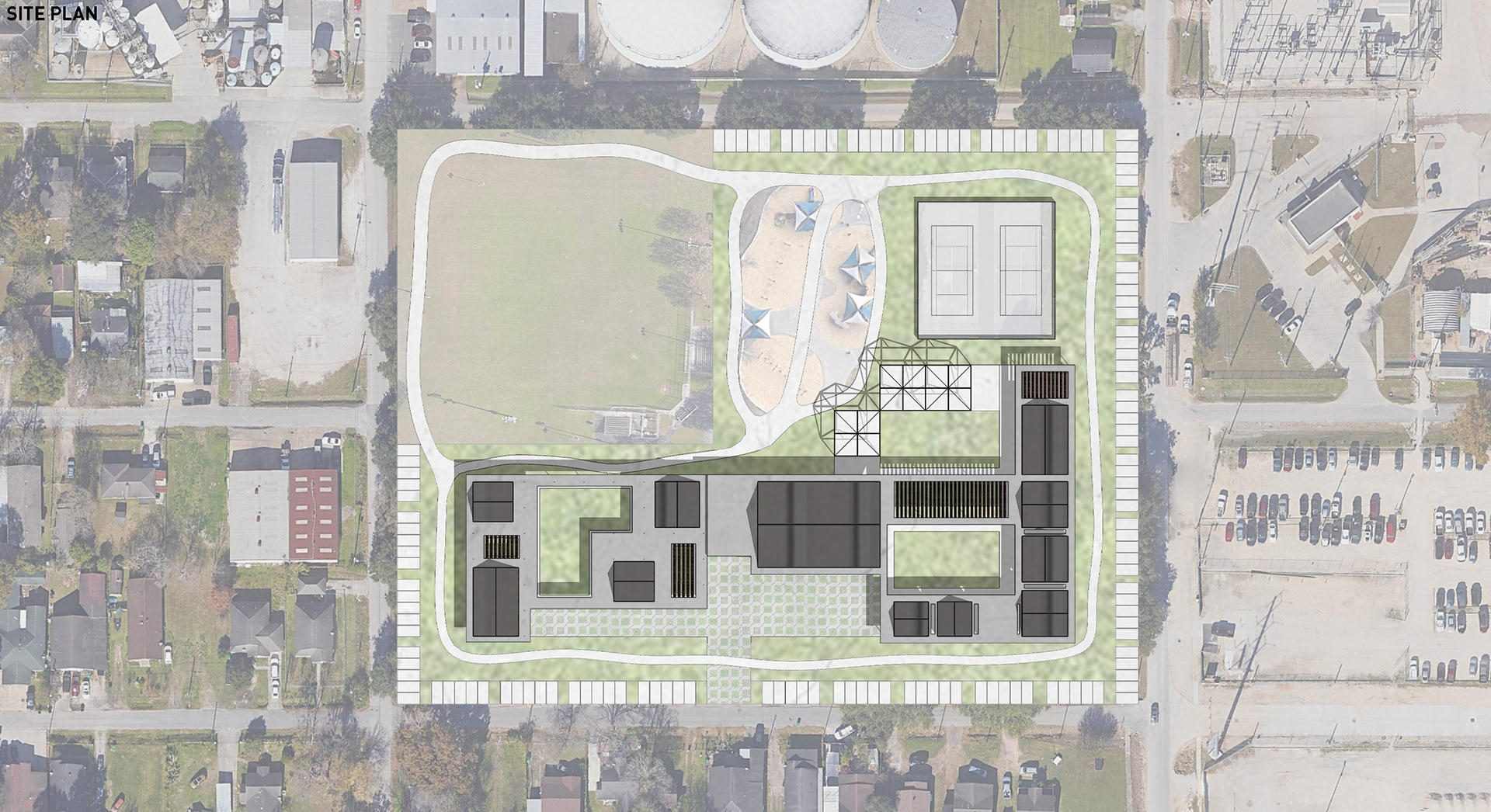
Overall site plan.

Plan of all buildings.
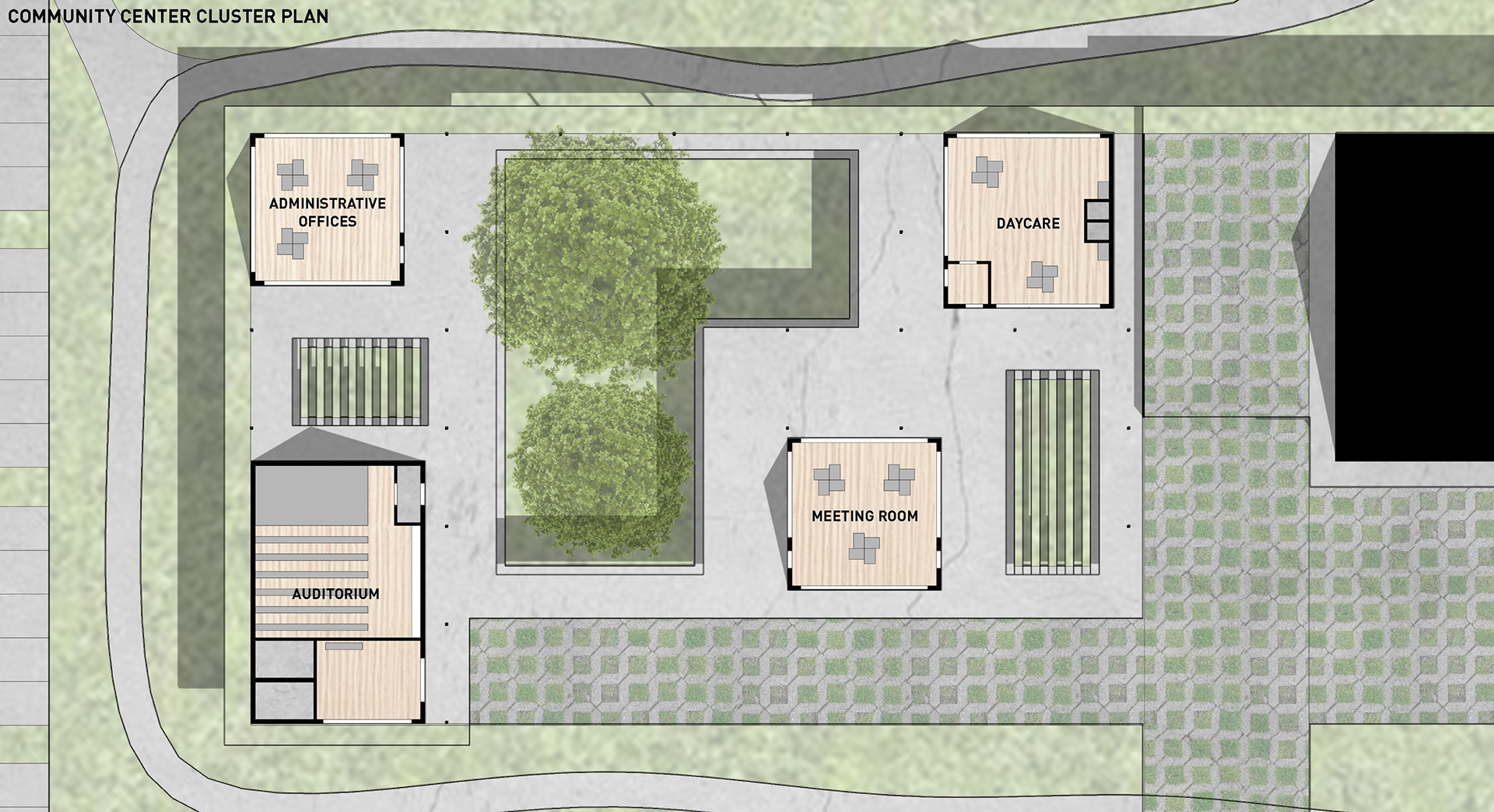
Community Center plan.

Community Center section.
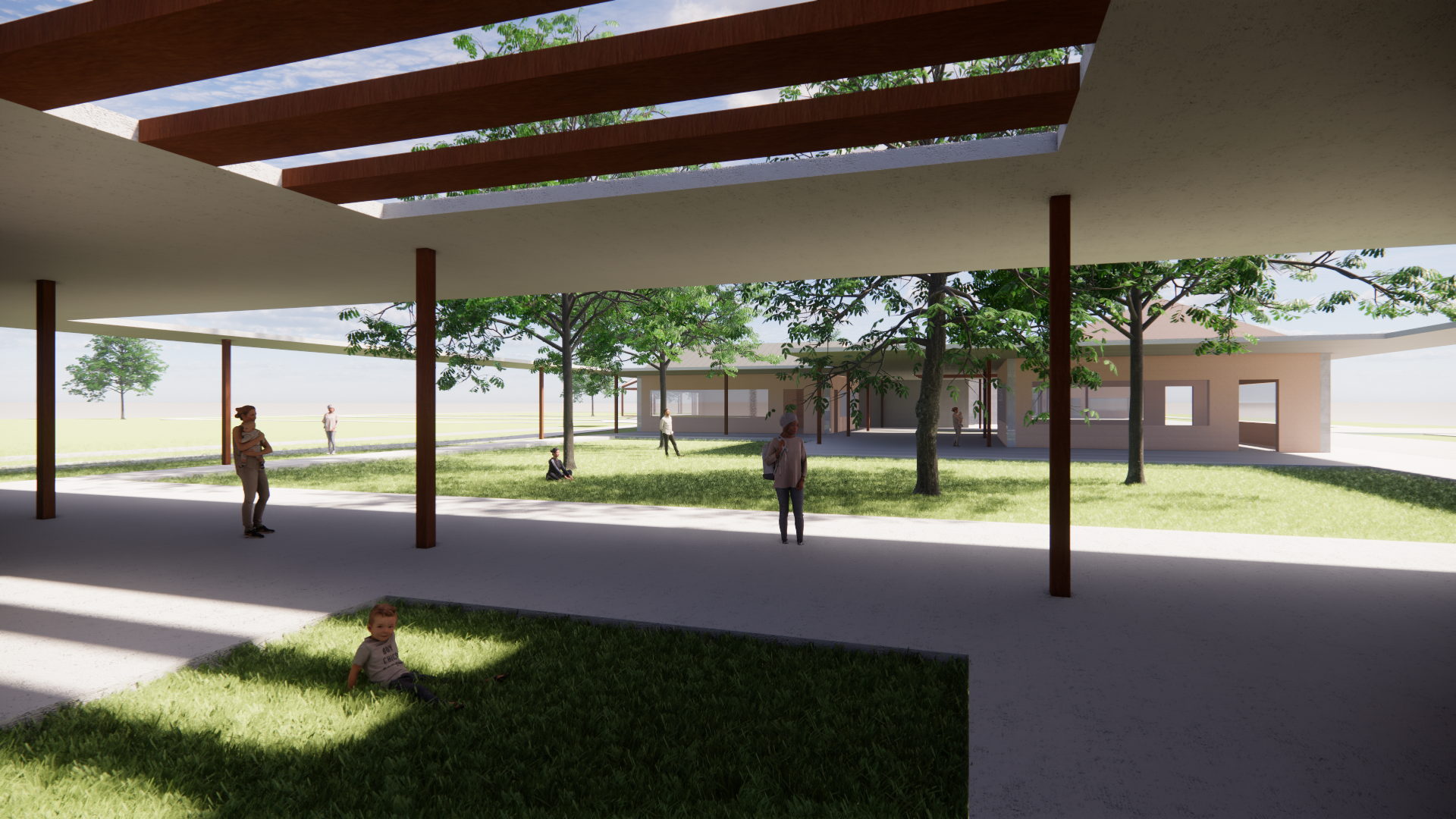
Community Center rendering.
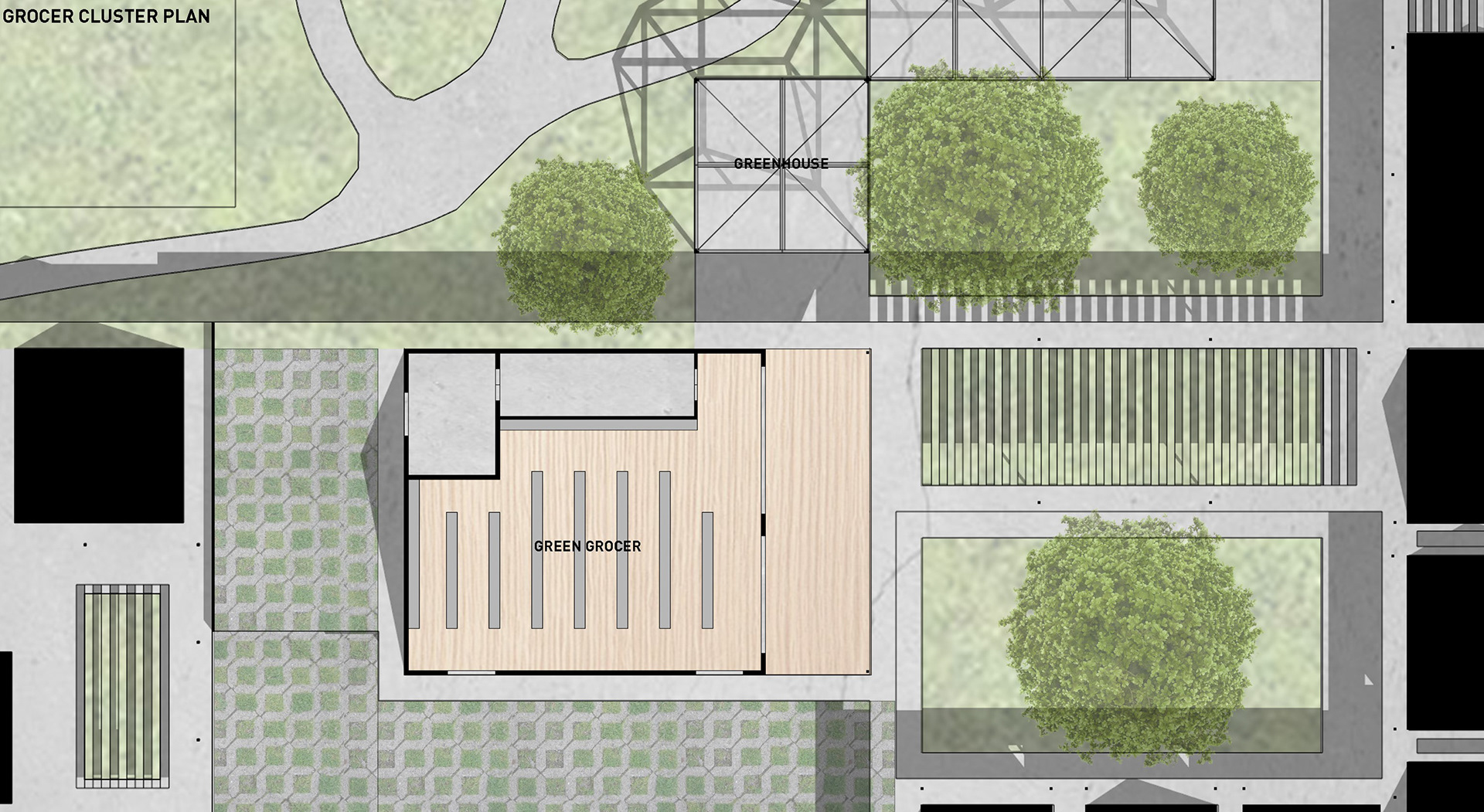
Green Grocery plan.
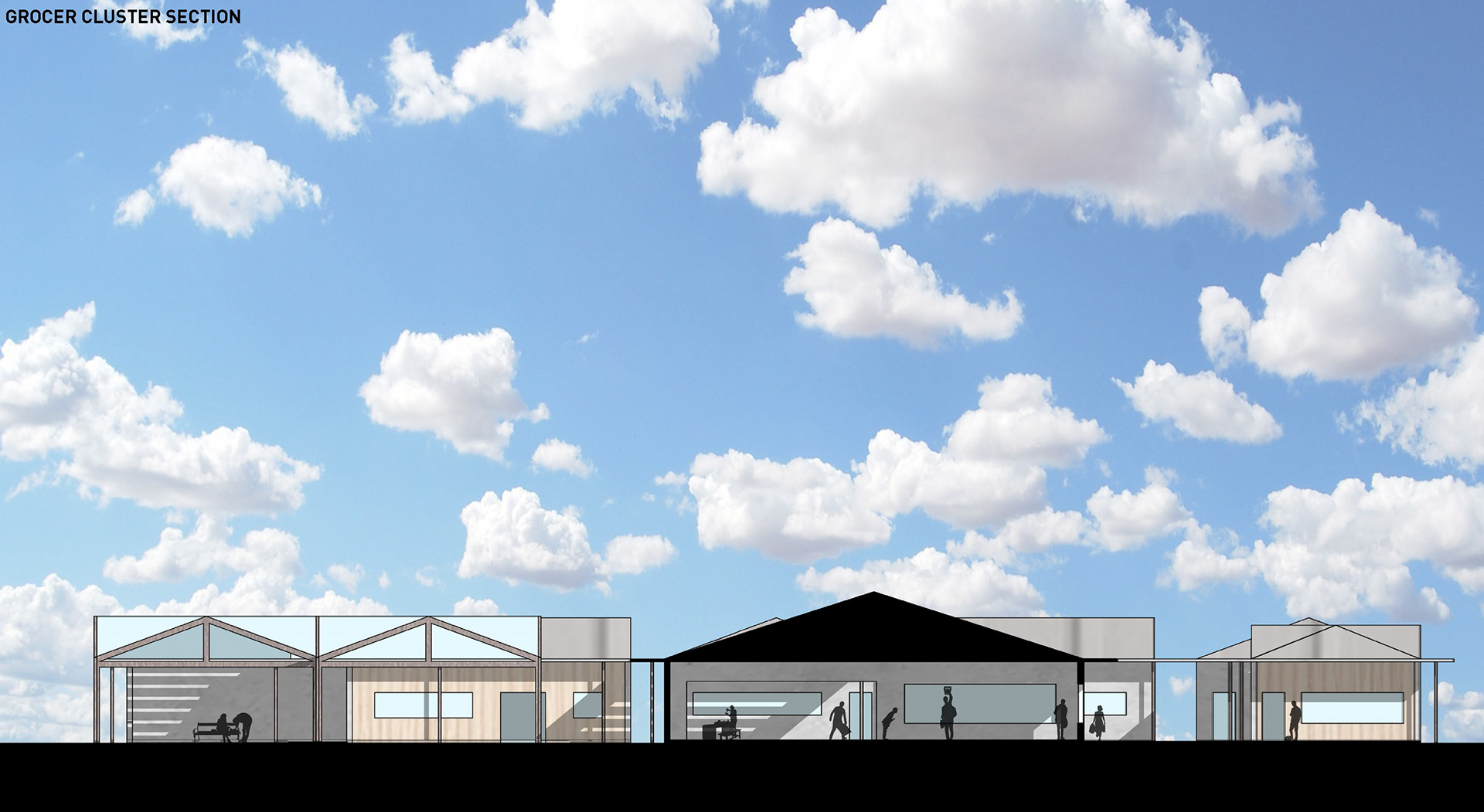
Green Grocery section.
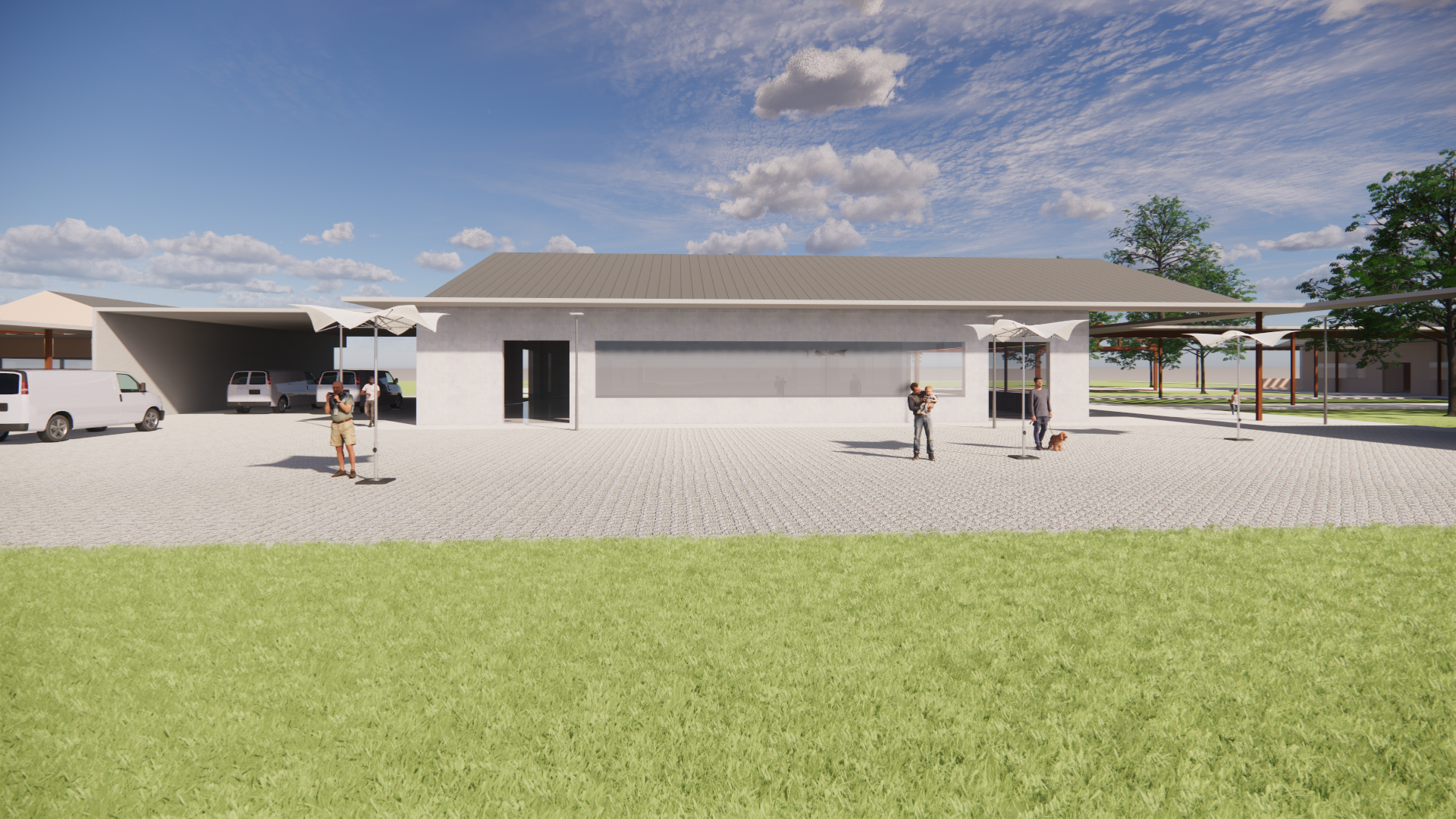
Green Grocery - central plaza perspective.
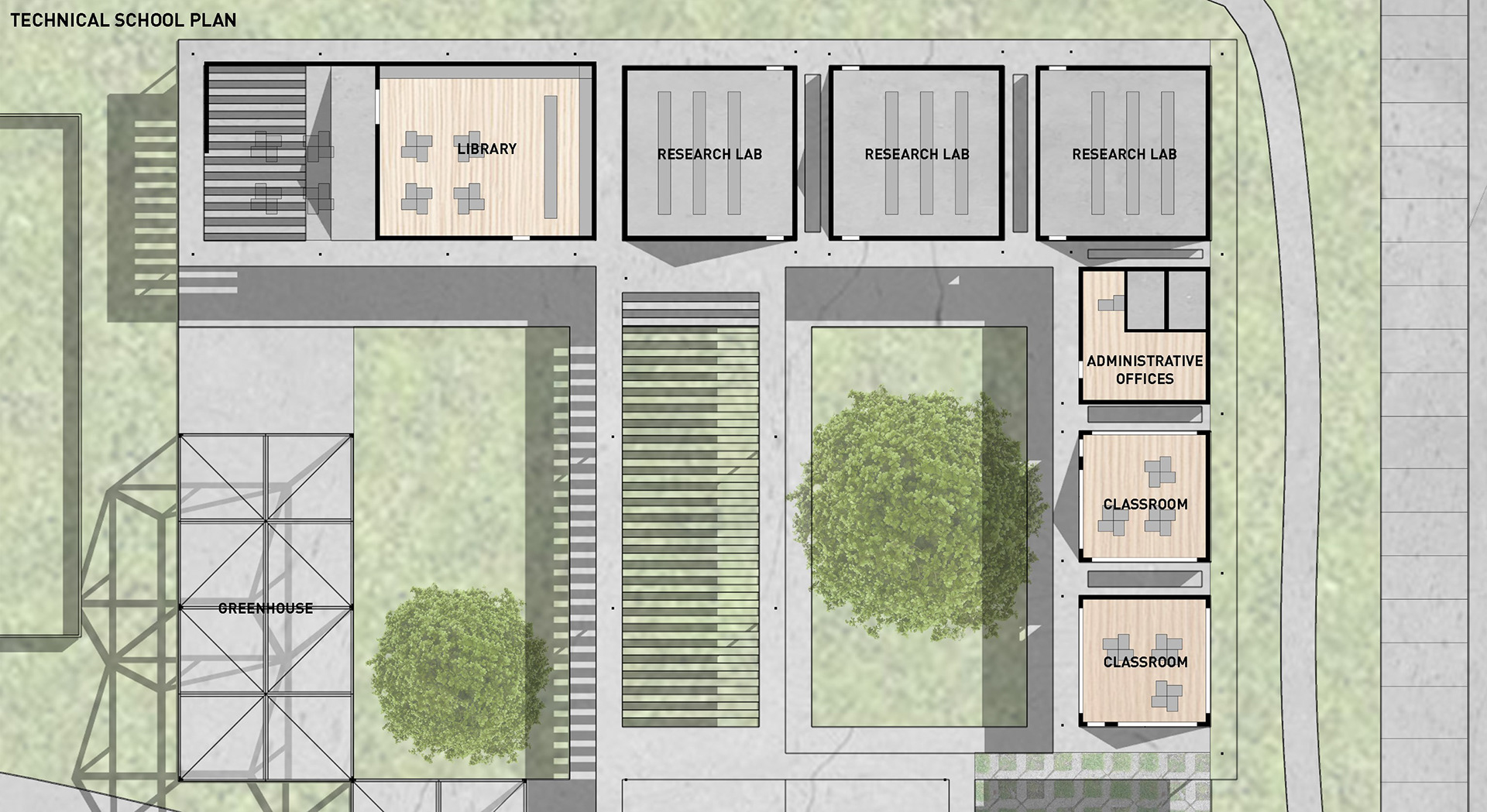
Technical School plan.
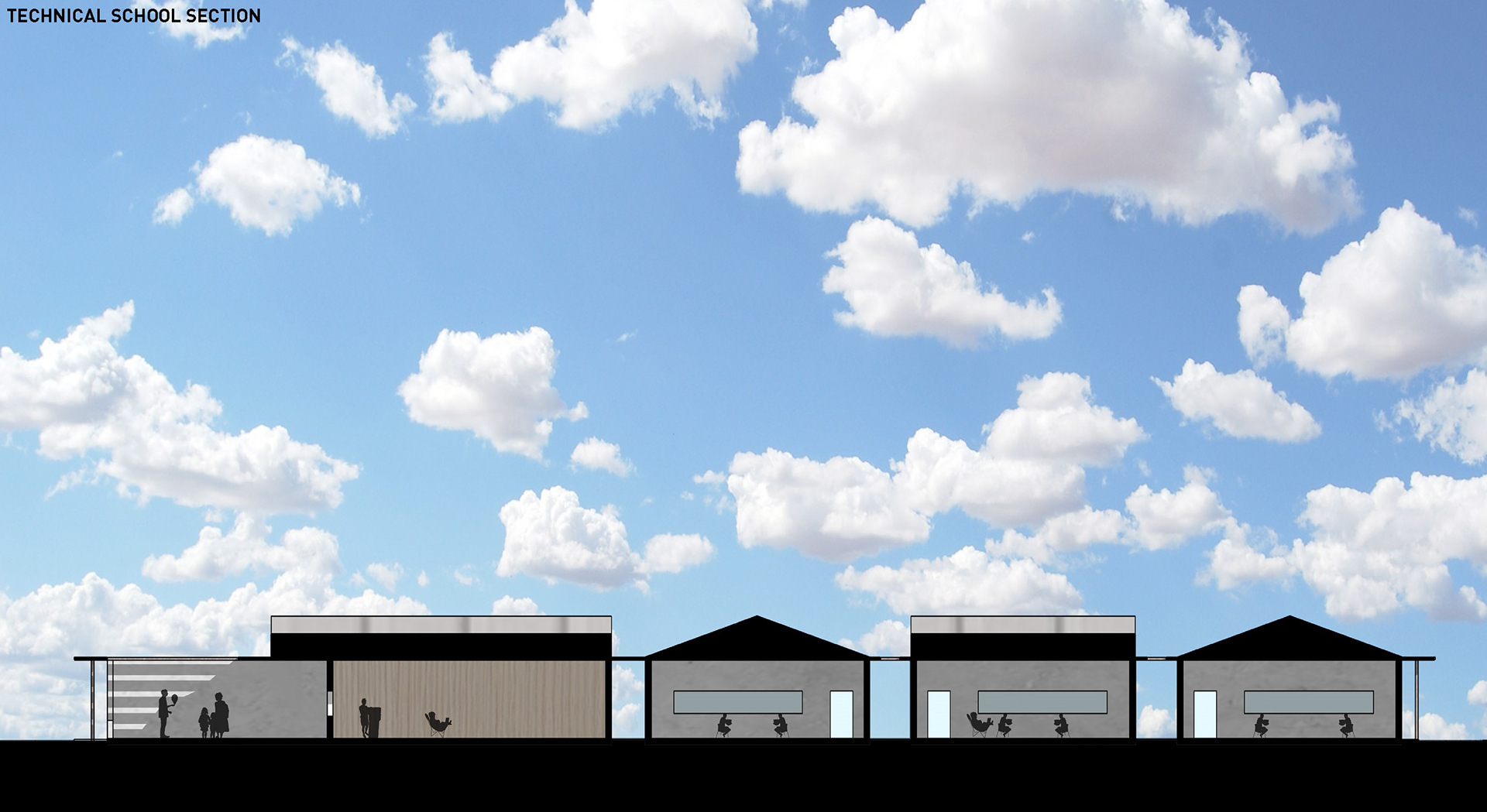
Technical School section.
